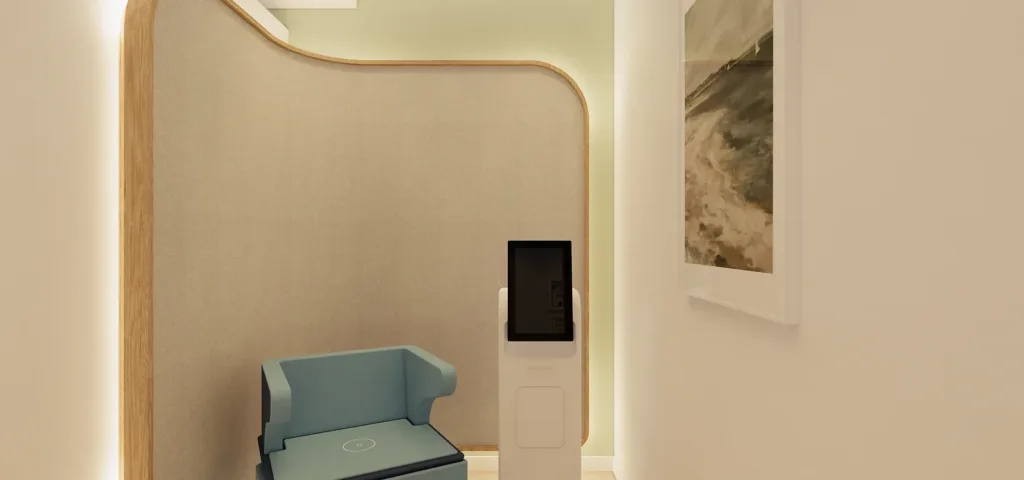We guarantee instant result on every session of your treatment. If you would like a better and longer lasting results, we recommend you to come for subsequent treatments.
Depending on individual’s body condition and needs, we will thoroughly evaluate your body condition before personalizing a suitable treatment plan for you. In general, to achieve ideal and best shaping results, it would take around 6-8 sessions.
Unlike massages, chiropractic and osteopathy, we use freehand technique, helping you to relieve the stiffness of muscles, and correct misaligned bone slowly. We have devices with HIFEM Technology as well, helping you to strengthen body muscles, achieving ideal body posture more effectively in shorter period of time!
Definitely yes! Regardless of the period after giving birth, we have our professional technique to correct and align pelvis effectively.
Sure, especially recommended for Pelvis & V Part Reverse treatment. Concerns of wide hips, pelvis tilt or uneven, saggy hips or looseness of V part could be solved with this treatment!
-People with fibroids are not recommended for treatment within 6 months
-People with implanted metal plates are not recommended for treatment within 6 months
-Caesarean section mothers are not recommended for treatment within 4 months
-Natural labour mothers are not recommended for treatment within 1 month
-Pregnant lady
-Lady on menstruation
Yes, a misaligned pelvis may affect fertility. The pelvis is an important reproductive organ that carries the uterus, ovaries, and fallopian tubes. If the pelvis is not in the correct position, it may negatively affect the position and function of the ovaries and fallopian tubes, thereby affecting fertility.
For example, a tilted pelvis may cause compression of the ovaries and fallopian tubes, hindering the normal release and movement of the egg, thus reducing the chances of conception. Pelvic narrowing may also affect the passage of the egg, thus affecting fertility. In addition, pelvic diseases such as pelvic inflammatory disease, endometriosis, etc., may also affect fertility.
Our treatment process is 100% safe and will not cause any pain or side effects. You don’t need to worry or undergo anaesthesia, and you can rest assured to receive our treatment.
We place great emphasis on the safety and health of each customer, so we recommend that you receive a free consultation before undergoing treatment to better understand the treatment process and its effects, and decide whether treatment is necessary. Our professional manual therapists will answer any questions you may have during the consultation process, ensuring that you can make an informed decision.
Does this treatment apply to postpartum sagging and loosening of the buttocks or private part?
For natural birth, it is recommended to wait 30 days before receiving treatment. For Caesarean section delivery, it is recommended to wait 90 days.
You will experience a significant tightening effect as if you were a virgin again. We use various techniques, one of which is pubic joint correction, to increase the tightness of the pelvis by narrowing the pubic bone by 2cm (one finger width).
Postpartum urinary incontinence is caused by excessive expansion of the pelvic floor ligaments and muscles during childbirth, as well as tissue relaxation in the urethra. After correcting the V part of the pelvic bone and using our “happy chair,” you can definitely help solve the problem of postpartum urinary incontinence and strengthen the pelvic floor muscles. Just sit for 30 minutes, which is equivalent to doing 12,000 Kegel exercises!
Pelvic private repair should not be done during menstruation. This is because the body is weaker during the menstrual period, and performing the treatment may cause stimulation to the uterus. The best time to start the treatment is on the fifth day after the end of the menstrual period. Of course, pelvic correction should not be performed if pregnant.
Long-term poor posture, such as bending over while standing or sitting, hanging one leg, carrying a backpack or handbag, etc. Crossing legs can also cause the pelvis, spine, and lumbar vertebrae to shift, leading to uneven pelvis height. Wearing high heels for a long time can also cause the pelvis to tilt forward. During pregnancy, the pelvis will shift forward as the fetus grows, which can also cause the pelvis to tilt forward.








